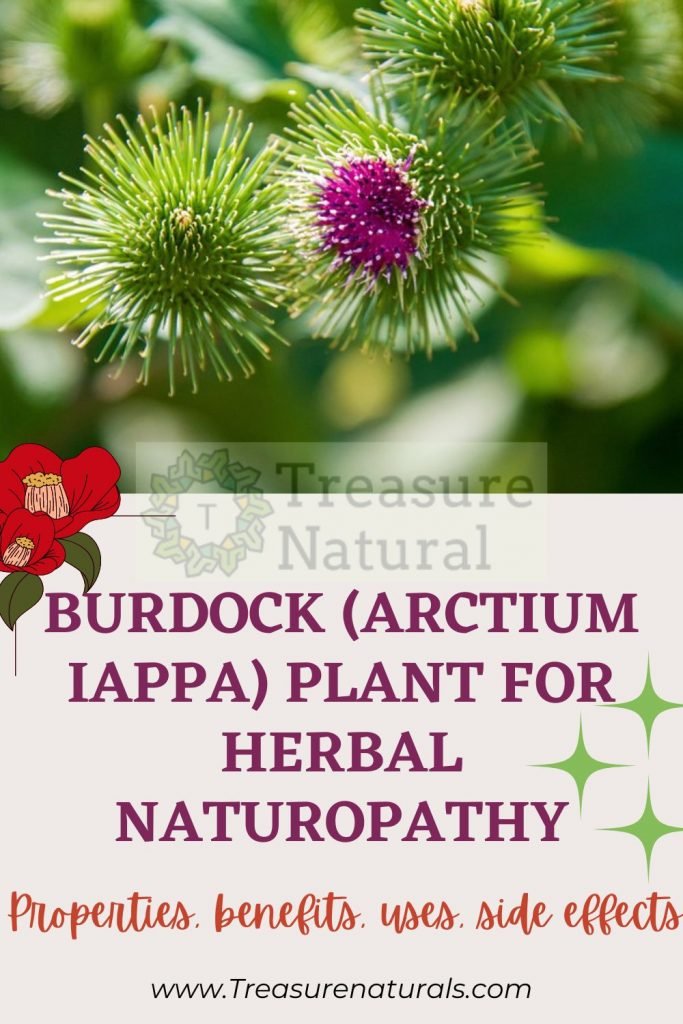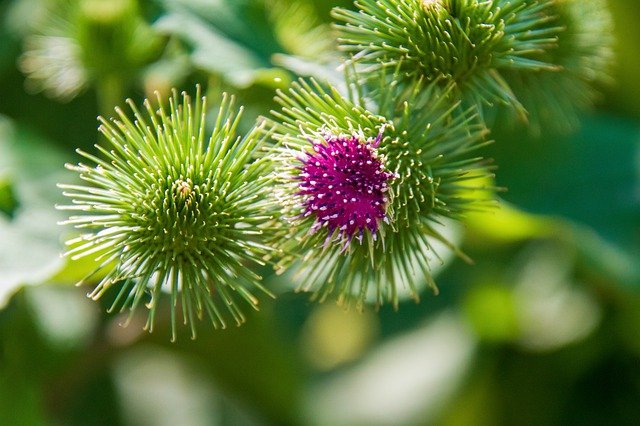
Burdock is a purifying medicinal plant, useful for treating acne and other skin problems.
Burdock is a spontaneous medicinal plant known for its purifying and antiseptic properties, exploited above all for the health and beauty of the skin. Let’s find out better.
What is burdock
Burdock (Arctium lappa) is a perennial plant of the Asteraceae family.
It is a spontaneous and officinal plant used in herbal medicine and phytotherapy for its therapeutic properties.
The drug of the plant is represented by the root which is used internally and externally in the form of:
- Decoction;
- dry extract;
- fluid extract;
- tincture
especially as a cure for acne. Burdock leaves are also used externally, for their antiseptic, soothing and anti-itching properties.
Properties of the burdock
Burdock root is used for the following properties:
- purifying
- antiseptics
- hypoglycemic agents
- hypocholesterolemics
- diaphoretic
- diuretic
- cholagogues
- mildly laxative
The properties of burdock are given by the phytocomplex present in the root which includes inulin, phenolic acids, mucilages and traces of essential oil.
What is burdock for
Burdock is used both externally and internally to treat mainly dermatitis, acne and eczema and is also used in the case of rubella and measles.
For this purpose, the root of the plant is mainly used, while burdock leaves are useful for external applications in case of itchy skin associated with dermatitis.
Internally, preparations obtained from burdock root are used to reduce cholesterol and blood sugar.
Benefits of burdock
Thanks to its properties
- Diuretic;
- cholagogues;
- diaphoretic (promotes sweating);
- mildly laxative
burdock is one of the purifying plants.
One of the main benefits of burdock is therefore to facilitate the removal of toxins from the body through the excretion of bile, urine, faeces and sweat. It is therefore a useful remedy for the purification of the liver and, in general, of the whole body.
The administration of burdock also allows to improve intestinal function and sebaceous secretion, further increasing the detox capacity of the body.
The hypoglycemic and hypocholesterolemic action, on the other hand, justify the use of burdock for the control of glycaemia in case of diabetes and blood levels of LDL cholesterol.
The purifying properties of the plant are mainly exploited for the health and beauty of the skin: the purifying action of burdock for acne is known, in addition to the use of the plant for eczema, seborrheic dermatitis and other skin disorders.
The benefits of burdock for the skin are obtained above all through oral administration which can be accompanied by compresses and skin washes or the application of creams and lotions containing burdock extracts. The cosmetic use of burdock is useful in case of oily skin, blackheads, boils, acne, itchy dermatitis and seborrhea of the scalp, oily dandruff and hair loss.
How to make burdock tea
Burdock tea is prepared by placing the dried root in water at room temperature. The water is brought to a boil and the root is boiled for about ten minutes over low heat and with the lid on. Once left to cool, the decoction can be filtered and consumed or used externally.
How to use
Burdock can be used in decoction, fluid or dry extract and mother tincture.
- The decoction of burdock is prepared with about five grams of root for each cup of water and can be consumed two or three times a day.
- The mother tincture of burdock is administered by diluting 40-50 drops in a little water three times a day between meals.
- The dry extract of burdock is generally taken in tablets or capsules, while the liquid one comes in drops; the dosage in these cases may vary and it is necessary to refer to the instructions given by the manufacturer.
Side effects of burdock
Burdock is a safe remedy and there are no known side effects associated with taking this plant.
Contraindications of burdock
Preparations based on burdock are contraindicated in case of sensitivity or allergy to the plant or to other species of the Asteraceae family. The intake of burdock could also have interactions with hypoglycemic therapies.
Description of the plant
The burdock plant is herbaceous, bushy, which can exceed one meter in height by developing a robust root.
Burdock leaves are heart-shaped, green on the upper side and greyish on the lower side due to the presence of hairs.
The flower heads of the burdock are globular, formed by purple-colored tubular flowers gathered in corymbs enclosed in an envelope with hooked brates. The fruits of the burdock are cypseles with pappus.
Habitat of the burdock
Burdock is a widespread plant in the temperate areas of Europe and Asia.
Background

The name Arctium, like many others, was introduced into the systematics by Linnaeus, but certainly the origin is more ancient. Arctium in Greek means bear and probably refers to the hairiness and bristly appearance of the plant.
The name of the species could derive from the Celtic: “llap” which in this language means “hand” since the inflorescence sticks, like a hand, to whatever passes by. The name of the plant, however, could also derive from the Greek: ” labein” (to stick), always referring to the fact that the fruit adheres to the clothes and fur of animals.
The plant has been known since ancient times as a vegetable and medicinal plant. In ancient folk medicine it was an antidote to the bites of poisonous snakes and dogs suffering from rabies; this indicates how much value was attributed to the ability of the burdock to “penetrate” deeply and to “attack” with the hooked flowers.






